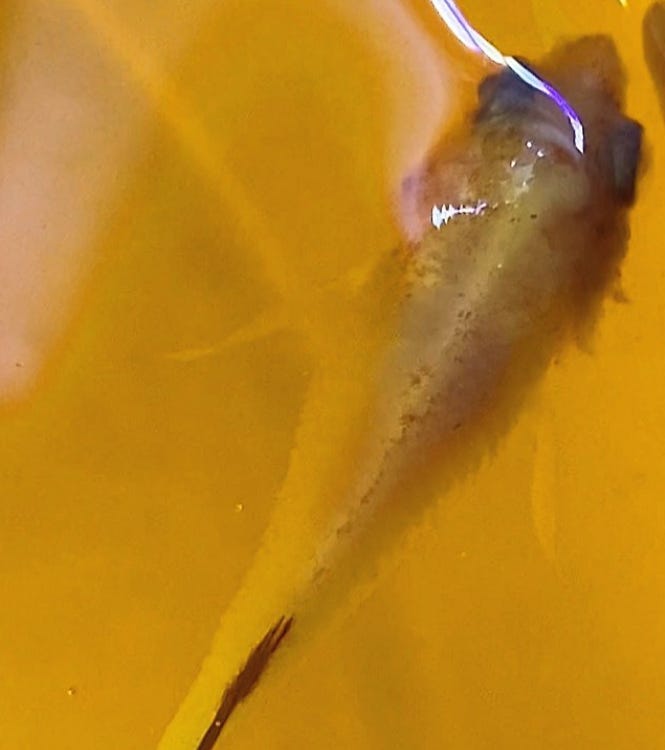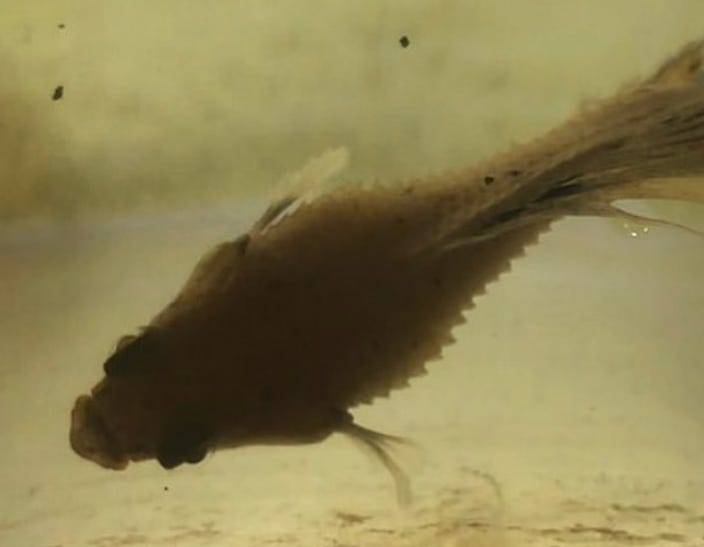[COPY] The Dreaded Dropsy: A Deeper Look.
Everything I know about the most hated of betta illnesses
When it comes to the fear of disease in bettas there is no affliction more dreaded than dropsy. With its characteristic symptoms and unmistakable identity that so often signals the death bells for a beloved fish, dropsy has been the bane of fish keepers since the beginning of the hobby. But what is this iconic condition? Can it be treated? Is there hope of recovery? How? Let’s get into one of the most polarizing topics in fish keeping— what to do about dropsy.
First, dropsy has been around for a long time. During this time a variety of methods for combating it have been used, most of them last-ditch efforts with almost no survivors. If you look online, the vast majority of fish keepers don’t even believe that dropsy is survivable at all, much less that treatment is worth it. That being said, the tone of online dropsy treatment has started shifting in no small part thanks to my work, but you will still find sources online that decry dropsy as a killer not worth fighting and claim that it’s not survivable. Even the ones who believe in the possibility of treatment post methods and tips that I’ve found detrimental at best and just plain cruel at worst. Most of what I am going to say here will directly contradict a lot of the info you can find online. I am going to say things that I know a lot of fish keepers are not going to agree with. But my methods are backed with results. My fish cases are highlighted successes. The treatments themselves are scientifically as sound as it’s possible to make them with so little internal information available.
So let’s get started.
What is Dropsy? Well, that’s not as simple as an answer as I first thought. What we know as dropsy is wrong. It is actually more useful to imagine the name as an umbrella term for a wide variety of disorders. I’ve even identified three different types of dropsy, each with its own stages and characteristics. But in short, dropsy is a condition characterized by pineconing— the symptom of scales that stick out from the body in a way that resemble the scales on a pinecone. This iconic look is shared by all types of dropsy and is the single most important diagnostic tool we have. If there is pineconing present, that means dropsy. Full stop.
But what causes pineconing? Online, you’ll find information that outlines the condition as being linked to either multi-organ failure or, more specifically, kidney failure. In reality I do not think the specifics of which one it might be matter much overall. The result of this possible organ failure is that free-fluid begins to fill the body cavity, resulting in the sticking-out scales of pineconing. So if you see pineconing, internal organ failure has already progressed to the point where enough free-fluid is present to displace the scales. This is why acting at the first sign of pineconing is so important— by the time symptoms appear, massive amounts of internal damage have already been done and the fish is most likely already dire trouble.
Worry not! All hope is not lost. But before we get into treating dropsy, let’s talk about the types of the disease, how to spot them, and what might be causing them. Identifying which type your fish has is essential to delivering correct treatment. Due to post limits, this post will only focus on the 1st one.
Type 1: ‘Classic’ dropsy
This type of dropsy is the most common and disproportionally affects younger, previously healthy fish. It can occur overnight with very little warning, worsen quickly, and seemingly kill in a handful of hours. There are four stages:
Stage 1. Pre-dropsy.
Yes, some cases of dropsy show clear signs of something wrong before the pineconing appears. With a keen eye, you can get the jump on treatment if you notice these signs:
The gill plates not lying flat, giving the head an angled, puffy look. Bloating with no pineconing present. The saddle, the part of the betta that connects the belly to the more muscular body wall, swells until there’s no clear distinction between them. This can be harder to spot on overweight bettas. Lethargy. Slowed reactions. The most telling sign is the gill plates, which I have not seen in any betta not about to pinecone out on you.
Devin: Note the saddle and gill plates that lie at angles to the head. Did go into full-blown dropsy after displaying these signs. Survived: Yes.
Stage 2: Dropsy
The betta is noticeably bloated with pineconing around the belly and some shingled scales. The abdomen is beginning to swell.
Rescue teenager: Note the belly pineconing and swelling and see how the pineconing does not progress down the body to the tail and remains confined to the abdomen. Survived: Yes.
Sunflower: More obvious pineconing here but it still does not travel dow the body. Again, note the head and gills and saddle. Survived: Yes.
Stage 3: Dropsy but worse.
The abdomen is fully swollen and pineconing persists down the line of the body to the tail. All scales are shingled and lifted.
Lime: Note how the swelling and pineconing continues down the body all the way to the tail but there is still room for things to get worse. Survived: No.
Stage 4: Dropsy that cannot possibly get worse
The betta is fully swollen up like a ballon. Pineconing is extreme and effects all areas of the body, even under the chin. You cannot possibly imagine this getting worse. Some scales might start to fall out at this point, and the ends of the fins begin to crumble off and die.
Rasa: Note the extreme degree of pineconing in every possible area. Special note to how puffy the gills are and how wide the head. Survived: No.
Frost: Note how extreme her swelling and how she cannot get worse. Her scales turned black and started to fall out. Survived: Yes.
Death is possible in all stages of dropsy, often suddenly. I have personally saved bettas locked in stage 4 though, so don’t give up hope!
What causes this type of dropsy?
In this type of dropsy I’ve found the underlying causes are often infection from outside sources. Body wounds, infected missing scales, seemingly-minor scrapes that turn sour— all of these can cause type 1 dropsy. But sometimes there’s no obvious cause and no fingers to point at problems. Sometimes dropsy happens without clear cause. Because of this type’s love of outside infections, I believe this dropsy type is where the theory that dropsy is contagious comes from. All cases of dropsy should be treated as potentially contagious, because some of the underlying infections that cause pineconing are absolutely contagious! Not every case of dropsy will be contagious but all should be treated like they are even if truly contagious cases are rare.
Since this type of dropsy predominantly infects younger, healthy fish, this dropsy type is the one I’ve had the most success with treating.
And I’m out of space! Onto the next post for treatment options!









love your info! addresses so many of my worst fears, as I consider getting a betta again as an adult